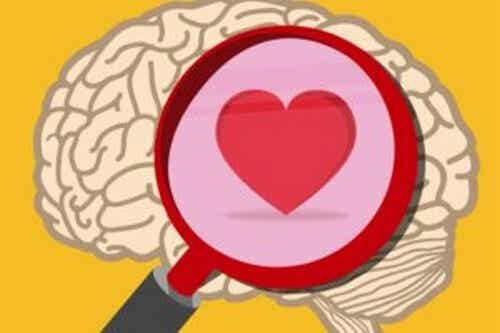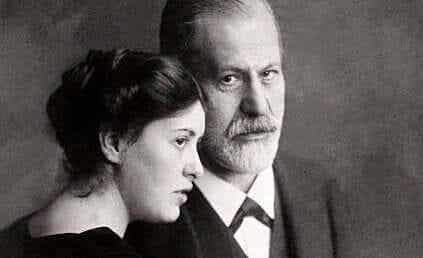Guilt, shame and pride are self-conscious emotions, closely linked to our ego and which come to light as a result of a series of internal evaluations and attributions.

Last update: December 03, 2019
Feeling ashamed when it comes to giving our opinion, feeling guilty about what we did one day away or feeling proud of a success. All these cases correspond to a series of emotions in which an evaluation of oneself is made. Psychology calls them self-conscious emotions.
These are emotional states with a series of common characteristics, but capable of giving rise to unique and specific risks depending on the type of evaluation we formulate towards ourselves.
“An emotion does not cause pain. Resistance or suppression of an emotion, yes, those that cause pain. "
-Frederick Dodson-
Self-aware emotions
In recent years, the scientific and psychological interest in emotions has grown a lot. Yet, we still ignore much of their functioning.
Nowadays, we have numerous studies on simple emotions and emotional intelligence. But with regard to all those emotions with greater complexity, as in the case of self-conscious emotions, the amount of material available is far less.
Nevertheless, the interest that has matured in self-conscious emotions in recent years has allowed us to formulate various theories and models. According to the studies conducted so far, self-conscious emotions share a number of important characteristics with each other:
- They are secondary emotions. This means that they are born only as a result of the evolution of simple emotions.
- They are complex emotions. To develop them, it is first necessary to have developed certain cognitive skills, such as an awareness of the ego or self-awareness (awareness of the difference between the ego and others).
- Let's talk about social emotions. They appear in interpersonal contexts.
- They are moral emotions. It is the fruit of the internalization of values, norms and cultural codes from which it is established what is right and what is not at the behavioral level. We also refer to emotions that play a fundamental role as motivating elements of moral conduct and empathy.
Guilt and shame, for example, can inhibit conduct that is considered immoral or to facilitate those categorized as moral. Acting immorally or not, in fact, we feel guilt and shame. On the other hand, pride is associated with good deeds and positive reinforcement that we may receive in the future by doing them again.
Another important factor to take into account is that, although these emotions are called self-conscious, the various scholars who have observed them affirm that the self-evaluation that we carry out to activate them does not always manifest itself in a conscious way.
Guilt, shame and pride: the differences
In addition to the characteristics we have just mentioned and which are common to all self-conscious emotions, there are some that differ from one emotion to another. Each of these shows itself following a certain event, according to a subjective experience and causing a series of distinct behavioral patterns.
Michael Lewis has developed a model that explains self-conscious emotions starting from two variables:
- The positive or negative evaluation of one's conduct.
- The inner attribution (global or specific) that is made of the conduct.
According to this author, we rate our thoughts, feelings and actions as successes or failures according to a set of cultural and personal rules, standards and goals. And on these assessments we make internal attributions, that is, trying to determine the reason.
If we believe that the success or failure is due to our ego as a whole, the attribution will be global; if, on the other hand, we believe it is due to a single thought, action or certain feeling, it will be specific. And depending on this attribution we will manifest one of the three self-conscious emotions.
This mechanism depends as much on cultural influences as on personal variables. For this reason, the same action can be considered as a failure by someone and as a success by someone else. The same also happens for attributions, which can be global or specific depending on the person. Below, we see the main characteristics of self-conscious emotions from Lewis' perspective.
Guilt and shame, emotions with negative self-evaluations
When we feel ashamed, we formulate a negative evaluation of the ego as a whole. We wish to hide or disappear, because we feel that we have made a fool of ourselves. We experience a certain mental confusion from which, unlike when we have to remedy an action, it is not easy to get out of it. For this we resort to mental mechanisms such as reinterpreting what happened or forgetting that it happened.
Guilt, on the other hand, although it too arises from a negative evaluation of the ego, develops at a specific level (i.e. for a concrete action). We feel guilty about something we have done, said or thought, because with this action we have harmed someone. However, guilt does not interrupt the action performed, on the contrary it triggers a series of conducts in an attempt to remedy the action and thus free us from our emotional weight.
Lewis views guilt as less destructive and more useful than shame, precisely by virtue of the remedial measures we put into practice when we feel guilty.
Pride and insolence, emotions with positive self-evaluations
Pride arises as a result of a positive evaluation of the ego in one of its specific components. When we are proud, we feel satisfied with something we have done. Since it is a pleasant emotional state, the tendency is to generate it again.
In his model of self-conscious emotions, when Michael Lewis talks about a decidedly exaggerated pride he chooses to refer to a disposition of the personality, rather than an emotional reaction. We are talking about insolence, an emotion generated by a positive evaluation on a global level that is associated, in extreme cases, with a form of narcissism.
When a person is insolent, he feels deep satisfaction with himself, which is why he will try to preserve this emotional state. Insolence is often associated with a feeling of superiority, a combination that arouses rejection from others.
Conclusions
What do we think when we feel ashamed? What do we attribute our pride to or why do we feel guilty? Can we tell when we are insolent? As we have seen in this article, there is a substantial difference between self-conscious emotions and the development mechanism that characterizes them., dependent on inner evaluation.
We still need to deepen and study these emotions, on a personal and social level. To what extent, for example, can pride and insolence be defined as positive emotions? And when, on the other hand, do they turn into negative emotional states?
The emotional universe, however exciting, never ceases to be complex and often mysterious, given its dependence on a large number of variables. Deeply studying the world of emotions is important because it facilitates the understanding of our essence. An extra piece to be able to answer one of the most important questions that human beings have always wondered about: how do we work?


























